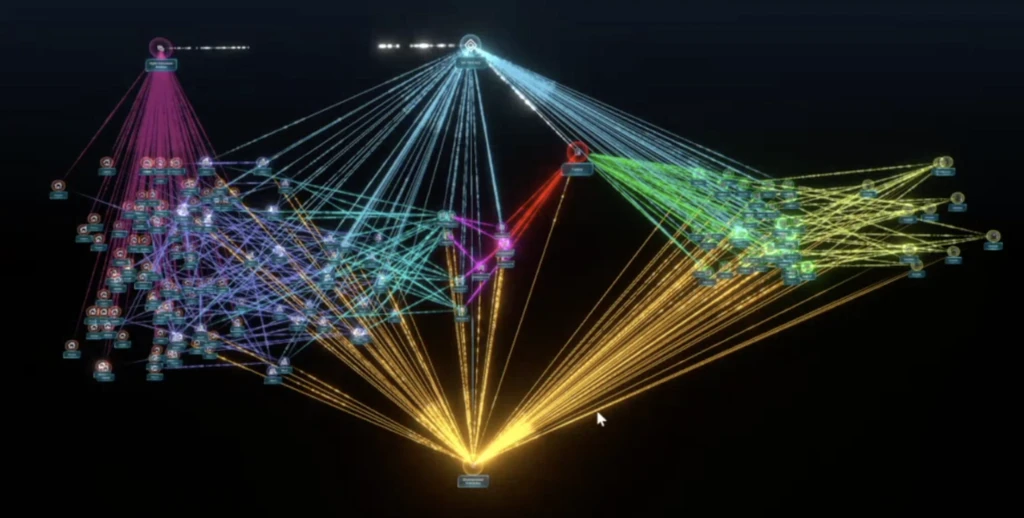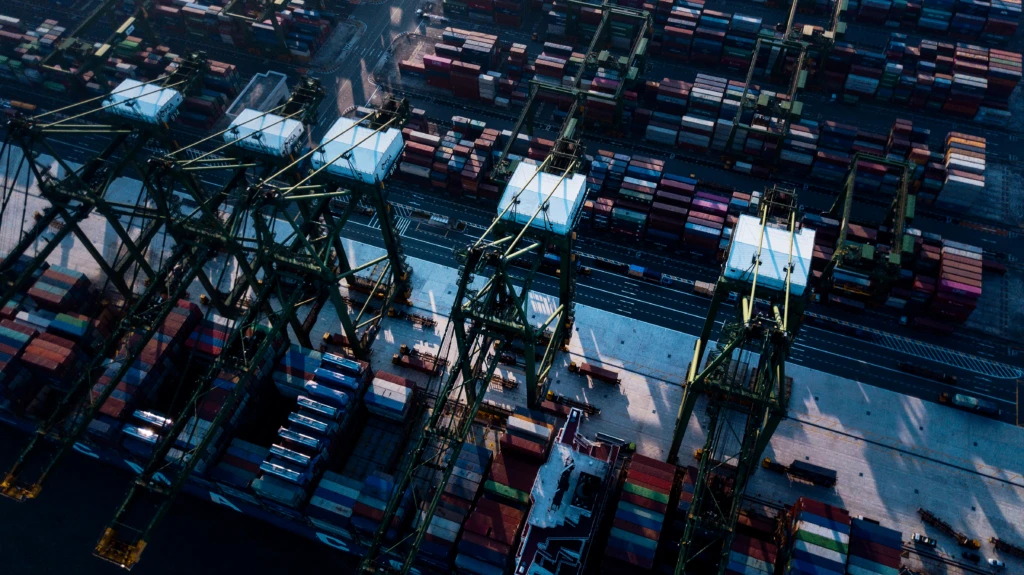
Revolutionizing the retail supply chain with digital twins
The business disruption caused by COVID-19 has resulted in four out of five retailers, 82 percent, changing their approach to how they manage their supply chains.1 Digital twin technology is one tool that retailers are adopting to address this issue.
Digital twin technology enables retailers to model their supply chains as connected environments. Retailers can model assets, warehouses, logistics and material flows, inventory positions, people, and processes. Real-time sensor and equipment data, as well as ERP and other business system data, feed the model to create a live execution environment.
Retailers can use the digital twin to simulate a supply chain’s performance and identify where optimization is possible. Real-time visibility provided by digital twins enables retailers to implement new non-linear supply chain fulfillment models like curbside pick-up or micro-fulfillment. The digital twin also creates an umbrella across siloed data enabling critical information to be available throughout the supply chain. Early retail implementers of digital twins have seen CAPEX reductions of up to 10 percent, sustainable inventory reductions of up to 5 percent, and EBITDA improvements of one to three percentage points according to Boston Consulting Group. 2
To gain additional insight, I met with digital twin experts Andy Pratt, CEO, The Marsden Group, Rasmus Hyltegård, AI & IoT Retail industry lead in Avanade’s Global Azure Center of Excellence, and Aaron Reich, Global Emerging Technology Lead, Avanade.
Learn more about Azure Digital Twins and intelligent retail supply chains.

Tony Shakib, Partner General Manager, Microsoft: Digital twins is a powerful tool that can be used throughout retail—both in the supply chain and in-store. From your point of view, how does digital twin technology uncover insights in the supply chain beyond what retailers currently have with control towers or predictive insights generated by planning models?
Andy Pratt, CEO, The Marsden Group: Predictive insights and control towers are great for understanding a specific process or piece of equipment. However, optimizing one aspect of the process well can make no meaningful gain overall as individual elements of the system can negatively impact others if changed. Some improvement can be achieved, and downsides partly avoided with good use of advanced planning models but not full optimization.
Imagine trying to play a board game wearing a blindfold that you can only remove to glance at the board every five minutes. This gives a snapshot in time, which is helpful, but due to the fast-paced nature of the game you must decide about your next move without taking your blindfold off, only referring to the previous data snapshot—but you know that the game has likely moved on!
Digital twins offer the ability to connect and optimize the entire process taking real-time data from control towers or other prediction tools and generating insight to create opportunities that have the greatest optimization benefits. The twin adapts to the dynamically changing live situation versus relying on historic snapshots of data from days, weeks, or even months ago.
Rasmus Hyltegård, AI & IoT Retail industry lead in Avanade’s Global Azure Center of Excellence: Avanade defines a digital twin as a way to take live and historical data interactions and fuse these with machine learning to create digital representations of the physical world across objects, spaces and eventually people. Control towers have been used for many years across supply chains to bring together multiple data sets
Digital Twins and simulations are a state-of-the-art business tool that enables the CxO suite to plan, optimize and model retail business scenarios in advance. For example, a retailer can use digital twins to track whether parts have received FCC, CE, or UK certification; and how those parts form a whole product enabling retailers to conform to rules of origin requirements.

Tony: How would a digital twin help a retailer navigate the kind of disruptions they have seen with COVID-19 including variability of demand, uncertainty, and volatility of supply?
Andy: The ability to quickly adapt to emerging supply chain shocks, such as COVID-19, can be achieved via the implementation of a full end-to-end digital twin for an organization’s supply chain. This enables the creation of multiple simulation scenarios in a virtual digital world before implementing an informed and robust decision, at pace, in the real world. The digital twin can generate and support many thousands more scenarios than a manual or simple computerized process.
Identifying bottlenecks, supply shortages, and demand curves in seconds create a huge advantage. Empowering the organization with the confidence and evidence needed to make fast and effective decisions creates agility in the supply chain. Stability is maintained and performance is enhanced regardless of the challenging circumstances being faced.
Aaron: Many times retailers navigate disruptions by looking at their own data, but they don’t have the ability to integrate other external real-time data into their models. It’s important for retailers today to be able to monitor and respond to any kind of event that may disrupt their supply chain. For example, retailers could use digital twin simulations that bring in live data from local traffic and weather data, combined with inventory and warehouse management, plus employee and local store constraints to optimize logistics costs.
With the pandemic and the increase in online shopping, retailers have had to accelerate their response for on-time delivery and to enable buying online and picking up in-store. Using digital twins, you can have a better understanding of where local supply chain challenges exist across your entire store footprint.
Tony: What are some best practices for getting started with digital twins?
Andy: Although the current version of digital twins is still relatively new, in the fast-paced, ultra-competitive world it is important to learn from those who have already implemented this approach at a global enterprise level. There are some practical considerations that can set a project up for success. Availability and configuration of data make a considerable difference when starting out on a digital journey—easily available, organized, and correctly tagged data is a fundamental pre-requisite. This can come from pre-existing systems or be generated via simulation or inferred approaches. Without this, the time taken for a business to realize high value from any digital twin is dramatically increased.
An additional best practice is to choose proof-of-concept locations where the teams are engaged, excited, and eager to embrace change. Without buy-in from the operational teams, we have seen projects stopped in their tracks.
Aaron: The first step in working with digital twins is to ensure you’ve got a clear definition of the problem you are trying to solve and the business outcomes it will create. Part of that is ensuring alignment on how you define digital twin to replicate something in the physical world and why you would use a digital twin to do that.
We’re talking with clients today about how digital twins in some instances are better than simply an application or a database because they more accurately represent the interaction. We worked with a retailer that took video feeds of the products on its shelves to create a real-time planogram to correct price and product placement. This makes it more real than say a flat database table or analytics report and can reduce the cost of root-cause analysis or make it easier to address new business challenges.
Tony: What type of business problem suits a digital twin solution?
Andy: In spite of the potential upside, digital twins are not a magic bullet to solve all business issues. Identifying the correct business problem at the outset is critical before embarking on a digital twin. Our criteria for a great digital twin problem include:
- High volumes of data availability
- Complex decision process with multiple varied outcomes
- High value for the business if even small adjustments are made
- Scalable and repeatable across multiple locations, once proven
It is not strictly necessary to meet all these criteria before starting to explore a digital twin use case. But in our experience, these provide a pretty good rule of thumb.
Tony: We’ve talked about supply chain; for what other parts of the business should retailers be thinking about digital twin?
Rasmus: One of the current emerging areas for digital twins is the modeling of physical spaces. Any retailer that has a physical presence should consider how they turn their store into an interactive 3D digital model that includes the ability to see not just their planogram, but to simulate customer traffic patterns; and how those customers interact with the realogram. For example, we’re currently working with a grocery retailer to improve its in-store experiences, which includes reviewing its in-stock/out-of-stock situation, which parts of its store attract the most customers, and whether those customers are converting.
Next steps
Thanks to Andy Pratt from The Marsden Group and Rasmus Hyltegård and Aaron Reich from Avanade for sharing valuable insights on how digital twin technology is revolutionizing retail supply chains.
Learn more about Azure Digital Twins and intelligent retail supply chains.
1 5 New Retail Supply Chain Trends Caused by COVID-19 Disruption, Advanced Supply Chain Group
2 Conquering Complexity in Supply Chains with Digital Twins,” Boston Consulting Group




